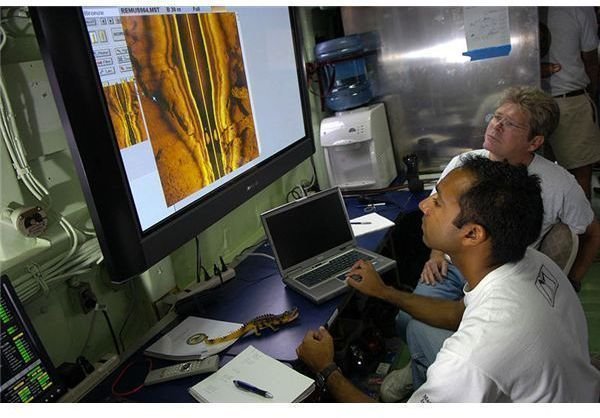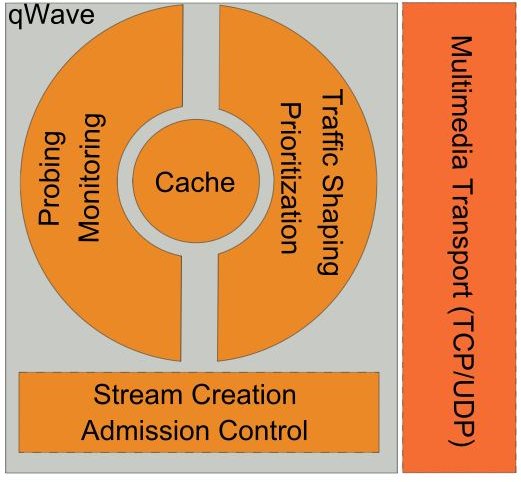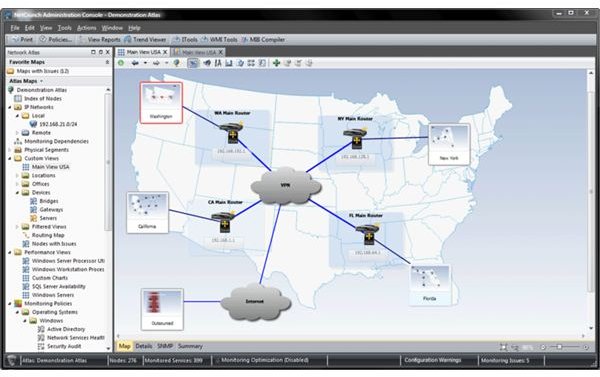Telecommuting Companies - Insights for Formulating Hiring Policies
Taking Stock of the Requirements

The Department of Labor (DOL) regards off-site work as a viable option, but it gives advice that telecommuting companies should make a thorough assessment of their readiness before fully embarking on teleworking as a competitive strategy. Accordingly, it can only be effective if management takes a more definitive stance by developing policies to administrate and take more control. They should also raise enough resources for technological and training support.
Organizations need to be strong and competitive as a means to gain an advantage in today’s business trends —-telecommuters are regarded as one of the critical components in providing full customer satisfaction.
It’s necessary to focus on the following points to ponder and gain insights on the issues that should be addressed when formulating the policies for off-site work.
-
Telecommuters have to be amenable with the terms, conditions and procedures set forth as policies.
-
The organization should have enough resources to support off-site workers with equipment, IT support and training.
-
Privacy and data security requirements are more complex and require constant monitoring processes.
-
A talent must be gauged not only by his or her skills and traits but also on the home office’s suitability to meet the company’s safety and efficiency requirements.
Developing the Relevant Policies

1. Analyze and Prioritize Job Positions that Can Be Effectively Performed Off-Site
Basically, off-site work demands no face-to-face contact with customers and at the same time requires minimal supervision over the employee. However, advancements in computer technology that address those two elements make it possible to harness telework over a wide range of tasks. As a result, some business entities have been easily swayed into making investment decisions over technological tools, without fully analyzing if the off-site work will contribute significantly to business profitability.
The key is to analyze and then prioritize which off-site job functions have greater potential to contribute in attracting and retaining customers and increase the efficiency of operational goals. Below are some of the tasks that should be analyzed according to their feasibility and are proven as workable by successful telecommuting companies:
1. Data processing: data entry; analysis; evaluations; calculations: They can be performed in related job positions for:
- Bookkeepers
- Accountants
- Central files clerks
- Clinical psychologists
- Clerk typists
- Data entry clerks
- Data research specialists
- Economists
- Financial / Market / Stock analysts
- Natural scientists
- Statisticians
- Lab technicians
2. Computer programming – Related job positions include:
- Applications programmers
- Software engineers
- IT specialists
3. Customer service assistance/help-desk support as performed by:
- Marketing specialists
- Telemarketers
- Technicians
4. Developing/Designing: Graphics and proposals can be accomplished by:
- Architects
- CAD/CAM engineers
- Design engineers
- Graphic artists
- Fashion designers
- Draftsmen
- Advertising executives
- Industrial engineers
5. Document processing: writing; editing; auditing, batch work; and transcribing: Relevant job positions include:
- Auditors
- Journalists
- Technical writers
- Bookkeepers/clerks
6. Engineering and other field work
- Civil engineers
- Purchasers
- Insurance brokers
- Salesman or sales representatives
- Realtors
2. Formulate policies that set forth terms, conditions and procedures that telecommuters will find amenable and at the same time beneficial for the organization.
Although teleworking arrangements are regarded by many as a form of talent-retention incentive, they should also clearly convey that the agreement is not a one-sided arrangement. HR managers should keep it in mind that in developing a telecommuting policy, the decision-making criteria observed in managing teleworkers are applicable to both onsite and off-site employees.
Moreover, it is equally important that policies are understood and accepted by employees requesting or applying for jobs that can be performed off-site. Providing the means to maintain work-life balance should also serve the employer’s purposes, which include but are not limited to:
(a) Increasing employee productivity to meet the rising demands of new ventures or customer patronage.
(b) Nurturing creativity as an important tool for coming up with innovations or new products.
(c) Reducing the opportunity lost due to absenteeism and sick leave.
(d) Reducing the costs incurred for unnecessary and unplanned recruitment caused by high rates of employee turnover.
(e) Reducing the overhead costs of floor space, parking requirements and utilities, since the workplace will maintain only a skeleton crew.
(f) Increasing job satisfaction, as this eventually equates to increased consumer approval.
(g) Increasing the organization’s competitiveness by manifesting technological competency, as this enhances the organization’s image in the eyes of customers, potential investors, suppliers, trade creditors, the community and other potential talents.

3. Establishment of guidelines for the organizational support extended to off-site workers in terms of technological requirements and for managing the related equipment, IT support and training.
Basically, the technical support provided by the organization makes it possible for the telecommuter to hook up and communicate with the company’s computer systems. Policies for organizational support deal with the provision of basic communication equipment, the care and accountability for assigned equipment, and the routine maintenance and troubleshooting requirements and procedures.
The most basic elements of technological support provided are tools for document sharing and collaboration, video conferencing, Internet connections, instant messaging, electronic bulletin board and whiteboard, web cam and electronic time sheets. Provisions for teleworking orientations and responsibilities for notification of equipment problems should also be embodied as part of the company’s policies.

4. Instituting policies that guarantee the organization’s privacy and data security.
Considerable attention to external security regulations like the Trade Secrets and Confidential Information laws is of utmost importance, since any breach that could penetrate the company’s system jeopardizes not only the organization’s data but also that of its customers.
The complexity of various securiy regulations requires the competent support of an IT specialist. However, the security training and add-ons to be provided to the teleworker should likewise be value-based, in consideration of the additional costs that are likely to be incurred.

5. There should be procedural guidelines for determining not only the skills, traits, and qualifications of the remote-based talent but also of the home office location and overall suitability to meet the company’s safety and efficiency requirements.
The competencies, skills and behavioral traits are key components to successful telecommuting programs; however, these policies and the telemanager’s people skills should be aligned. Teleworkers are selected based on their ability to contribute without the need for closer supervision; hence company policies and management initiatives should basically support the same context.
However, the organization reserves the right to impose conditions that would ensure that the home-based work station is generally free from distractions. The place should be maintained separately from home-activity areas, and with the home free from hazards and other obstructions that would otherwise make telecommuting work ineffective.
Similarly, policies must also consider the statutory laws and tax regulations that govern geographical locations, to determine the suitability of the off-site location to the goals of the company.
Continue to page 2 for informational guidelines on what to formulate as policies for telecommuting companies, based on federal employment laws
Incorporating Policies Based on Federal Employment Laws

Policy development should also take into account the federal employment laws administered by different regulatory agencies:
The Fair Labor Standards Act (FLSA) - The Department of Labor through its FLSA administrators oversees the employer’s compliance wtih the minimum wage and for overtime pay. The applicable rules regarding standard wages for regular workers hold true for those that render teleworking functions.
Policies should pay special attention to the number of hours rendered that should be compensated based on regular pay. The FLSA holds the employer responsible for instituting controls on monitoring the actual hours worked.
There should also be clear regulations regarding approval of work that is entitled to overtime pay. Conditions for approval should state the employee’s responsibility in providing advance justifications for possible overtime work. Doing so gives management the option to reschedule work instead.
Procedural policies usually cover the acts of logging in and out of the computer system to signify that one is reporting for active work. This should be supported by a computerized system of monitoring on a daily basis, as it automatically calculates the number of hours worked. The count commences from the time that the worker logs-in up to the log-out time.
In line with this, an accompanying telecommuting agreement shall specify the agreed-upon schedule for which the teleworker should be available to perform work.
The Occupational Safety and Health Act (OSHA) - This federal law governs safety measures instituted by employers to keep the official workplace free from known hazards as a means to protect the welfare and well-being of the workers.
Generally, the prescribed laws require the employer to include work-related accidents and illnesses that occur in sites located away from the official workplace; this therefore includes home-based offices of telecommuters. However, the latter are not included among those that are subject to inspection by an OSHA representative but this does not prevent the employer to conduct its own inspection exercises.
Hence policies should be in place to give the telecommuting homeowner proper guidance for any actions that may be undertaken by the employer, in the event that off-site workplace safety becomes a concern on the part of the company.
The Worker’s Compensation Act – This benefit-law furnishes employees with replacement compensation in cases of injuries or illnesses sustained as a result of a job-related accident. As a matter of policy, information regarding any injuries or illnesses sustained from work-related incidents in the home-based station should also be forwarded to the respective worker’s compensation administering office. The decision over a case’s disposition as a compensable injury or illness is at the discretion of that office.
Company policies for off-site work should define the remote worker’s responsibility to furnish sufficient information regarding any work-related injury or illness.
The Americans with Disabilities Act (ADA) – This federal law mandates the provision of reasonable accommodation to alter or adjust the workplace conditions if it will enable a person with disability to apply, perform or have equal access to the benefits of a job for which he or she is qualified. The provision, however, holds true only if it will not cause undue hardship on the part of the employer. Under ADA’s conditions, providing telecommuting work is considered a reasonable accommodation.
There has to be a company policy to define reasonable accommodation that is applicable to individuals with disability and at the same time qualified to perform an off-site function. This works along the premise that all policies shall apply equally to all employees, regardless if the job is held on location or off-site.
The Family and Medical Leave Act – This is a federal law that recognizes the worker’s need to take a leave of absence in times of illness or incapacity due to serious health conditions. It also recognizes those times when the worker is needed to personally attend to a sick family member.
The company should clearly state that the policy of allowing off-site work is not dependent on the employee’s need for work-life balance while caring for a child or a sick family member. It is a privilege granted mainly on the employee’s proven ability to perform his or her functions effectively despite personal obligations, even without the benefit of telecommuting.
Going Over the Main Ideas
The Department of Labor strongly encourages most companies to seriously consider teleworking as part of their human resource planning strategies. The key to this initiative is to consider the job functions that have been proven feasible, and then analyze the potential contributions that will impact one’s business organization. Take a definitive stance by selecting and prioritizing the job functions according to the greatest positive impact. Formulate and develop the policies that will ensure the attainment of the benefits posed by telecommuting.
Reference Materials and Image Credit Section:
References:
- Making Telecommuting Work – https://webcache.googleusercontent.com/search?q=cache:gAeFfCVhWYsJ:www.shrm.org/TemplatesTools/Samples/PowerPoints/Documents/09-PPT-Making%2520Telecommuting%2520Work.pptx+FLSA+for+telecommuters&hl=en&gl=ph
- Human Resources Policy Formation — https://telecommutect.com/employers/service2.php
- Telecommuting Growing Pains:Five Tips to Make Your Program Work –- https://www.instanthrpolicies.com/articles/telecommuting_growing_pains.htm
Image Credits:
- Released by the United States Navy with the ID 050910-N-7676W-063 / Wikimedia Commons
- By Raphael Javaux (original by ICSharpCode Team) / Wikimedia Commons
- By Soumyasch / Wikimedia Commons
- By Pasta party / Wikimedia Commons
- Creative Commons Attribution-Share Alike 2.0 Generic license / Wikimedia Commons
- United States Department of Labor / Wikimedia Commons